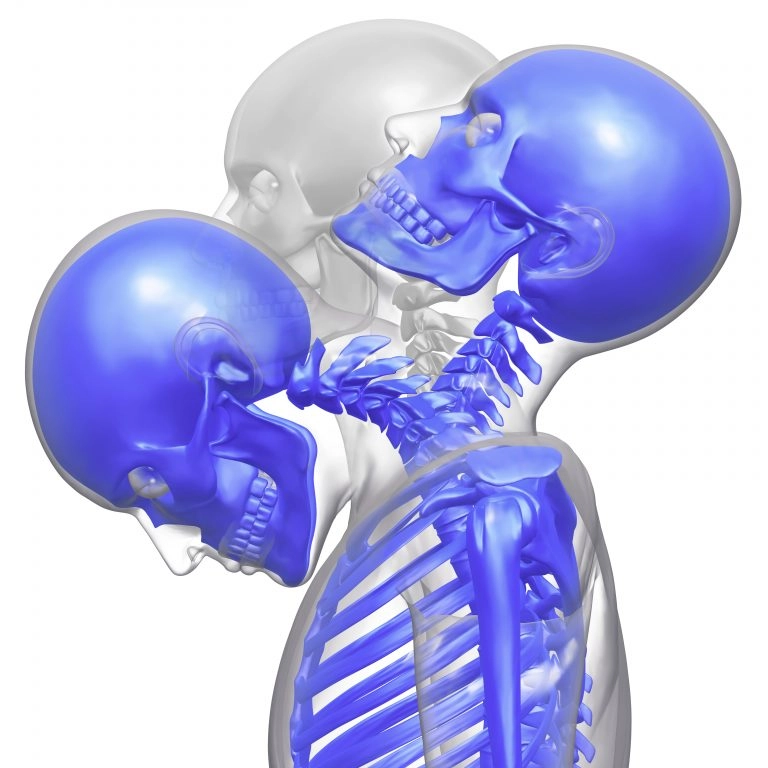If you have ever been a victim of whiplash, or if you know someone who has this injury, you know how much this neck injury can hurt! Fortunately, your local expert Anchorage chiropractor is here to help.
Whiplash can devastate your life, leaving you unable to work, sleep, or do anything you are accustomed to doing in your daily life.
But can whiplash make you dizzy? Can whiplash cause headaches or cause you to feel nauseous?
The answer to all of these is YES!
Of course, not everyone will have the same symptoms, but whiplash can not only cause you intense neck pain, but it can also cause one or all the problems listed above.
What Are the Symptoms of Whiplash?
One thing you will notice is a very stiff, painful neck. Symptoms of whiplash can occur between 2 hours and 48 hours after the injury (which isn’t always from being rear-ended).
You will most likely find that you are unable to turn your head or that you can’t turn your head without a tremendous amount of pain. This is the main symptom of whiplash, but there are others that can accompany this injury, including:
- Blurry vision
- Shoulder pain
- Arm pain (one or both arms may be affected)
- Headaches (sometimes intense)
- Dizziness
- Difficulty swallowing
- Difficulty sleeping
- Nausea
Is Whiplash Causing Headaches, Nausea, or Dizziness?
There are hundreds of studies that have shown that whiplash can cause other symptoms besides neck pain, including nausea, vomiting, episodes of dizziness, and intense headaches.
Unless you have had issues like the above on a regular basis BEFORE the accident, you should conclude that your whiplash is causing the symptoms above.
Nausea from whiplash is one symptom most people do not associate with whiplash, but vertigo and dizziness affect between 25 and 50% of all whiplash victims.
Can whiplash cause nausea? Yes, it can. This is thought to occur due to a blockage of circulation to the inner ear and head in general. This is what also leads to dizzy spells.
Besides neck pain and stiffness, headaches are quite common when someone has suffered from whiplash. Headaches after whiplash are often worse when the patient tries to move their head, especially to look up. Shoulder pain is also common for those with whiplash related headaches and the two symptoms are intertwined. Touching the muscles on the rear shoulder or the neck can cause headaches to increase in intensity.
Whiplash that is not treated promptly can lead to chronic headaches that are related to neck issues. These types of headaches are called cervicogenic headaches.

This is Why Treatment is Vital!
Receiving comprehensive chiropractic care at our local Anchorage office can prevent you from developing cervicogenic headaches or chronic whiplash!
If you are feeling nervous thinking about anyone, let alone a chiropractor, put their hands on your terribly painful neck and wrenching it, you have nothing to worry about. No professional chiropractor would do such a thing. They might gently have you move your head forward and back or side to side to see how much range of movement you have lost.
While it’s true that some people recover from their whiplash injury within 4-6 weeks, this will depend on how severely your whiplash injury is.
One Australian study found that approximately 33% of those with whiplash stated that they had recovered from their injury within 3 months, while a whopping 51% said that they had recovered after 2 years. This means that another 49% of those injured were still suffering pain due to their injury more than 2 years later!
You don’t want to become one of those in the 49 percentiles! As soon as you can, make an appointment with your top Anchorage-based chiropractor and find relief from your whiplash naturally.
Initial Chiropractic Treatment in Anchorage
Chiropractors see more than their share of whiplash victims! They understand just how painful and debilitating this injury can be, so they will treat you very, very gently in the beginning. No one will be twisting your neck around like an owl!
If you’ve never received chiropractic adjustments before, this article will answer many of your questions.
After a thorough medical history is taken and how you were injured is discussed, chances are that the chiropractor will merely help you stretch the neck muscles and give you a few exercises you should do at home until the next visit.
Be certain to tell the doctor if you have had any episodes of dizziness, nausea, vomiting, or headaches. This is important information. Don’t assume that these feelings are not related to your injury.
While television loves to show people wearing a neck brace, this isn’t helpful to the healing process. The first 48-72 hours is about the length of time that you can expect to wear the neck brace. The brace might help to reduce your pain, but if you wear it much longer than 72 hours, it will make your condition worse by weakening the neck muscles. The muscles in the neck need to heal and become stronger to properly support the head.
There are a few mistakes that are commonly made by those who have whiplash. You can avoid these mistakes while suffering from whiplash by reading this article.

What Else Can Your Anchorage Chiropractor Do for Whiplash?
For the fastest possible healing and relief from the pain and other symptoms you might be having, comprehensive chiropractic care can’t be beat!
Depending on your individual case, your chiropractor might recommend the following conservative, healing modalities including:
- Physical therapy stretching exercises
- Cold laser (Infrared)
- Ultrasound
- Chiropractic massage
- Rehabilitation exercises
- TENs unit (mild electrical stimulation and pain relief)
Eating a healthy diet, moderating your alcohol intake, and other healthy lifestyle choices will also see you faster on the road to recovery!
While you can’t always avoid accidents or injuries such as whiplash, you can follow your Anchorage chiropractor’s advice and follow a healthy lifestyle.
If you’ve found this article to be helpful, feel free to share it with family and friends.










